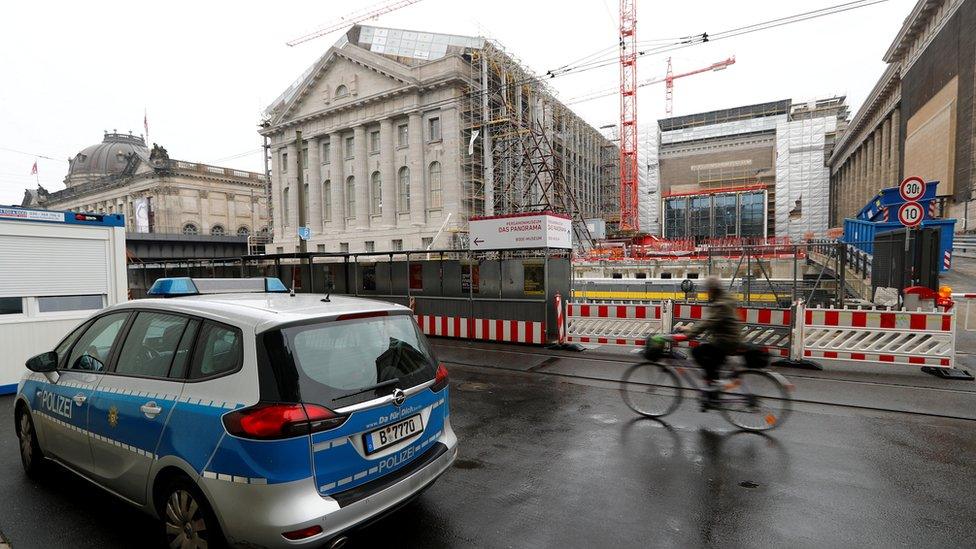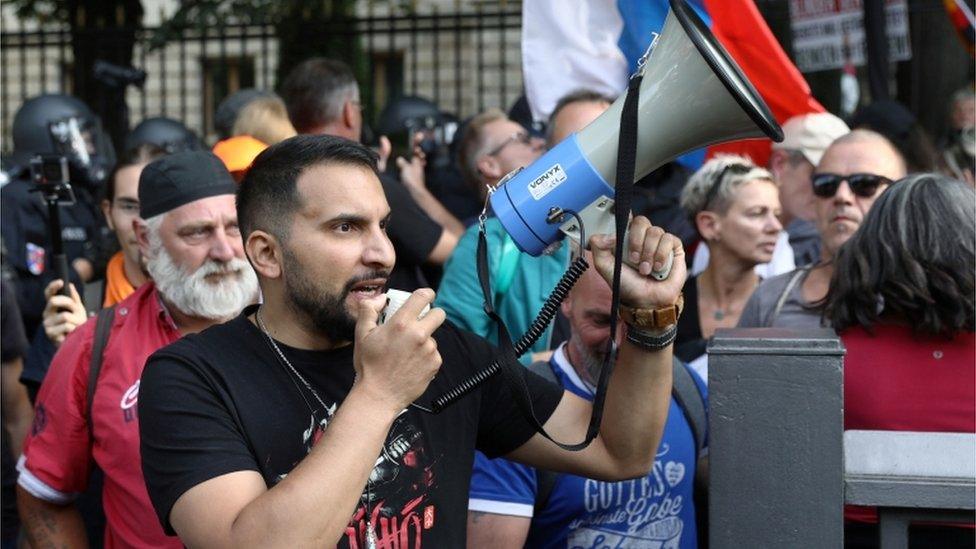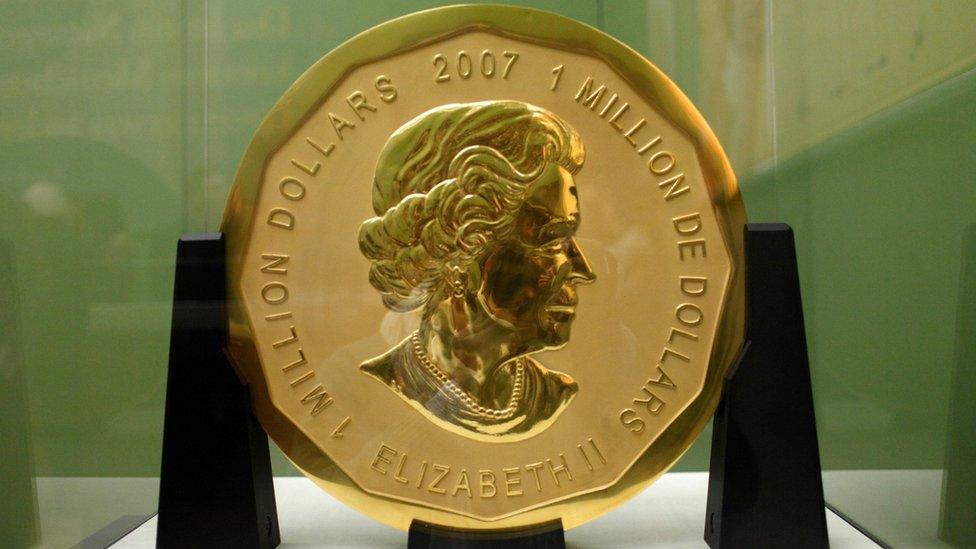Berlin mystery attack targets 70 museum artefacts
- Published

Some of the artefacts targeted were in the Pergamon Museum
It is being described as one of the biggest attacks on art and antiquities in post-war German history, but it has taken more than two weeks to emerge.
At least 70 artefacts were sprayed with an oily liquid on Berlin's Museum Island, a Unesco world heritage site that is home to five famous museums.
The attack took place on 3 October, the anniversary of German reunification.
German reports have speculated whether supporters of a far-right conspiracy theorist may have been involved.
Attila Hildmann, who has spread conspiracy theories about the Covid-19 pandemic, has also claimed that one of the five museums, the Pergamon Museum, is home to the "Throne of Satan".
What we know
Berlin's state criminal police agency released details of the attack late on Tuesday, 17 days after at least one unknown attacker targeted Ancient Egyptian sarcophagi, stone sculptures and 19th Century paintings.
The reason for the initial secrecy is unclear, and the story was only confirmed after police were approached by Die Zeit magazine and Deutschlandfunk radio. Other museums were not informed of the possible risk either, they report.
Investigators have emailed people who bought museum tickets on the day of the attack appealing for information.
Police told Der Tagesspiegel website they had been investigating the attack for a while "but for strategic reasons we've not made the case public".
Which museums were hit?
The oily liquid sprayed on to the dozens of artefacts has caused damage and left visible stains. A museum worker told Berliner Morgenpost that most of the damage was superficial. "Some of it we had to use a torch to find."
The museums targeted include the Pergamon Museum, which is home to the renowned Pergamon Altar, erected by King Eumenes II in the Second Century BC. Pergamon was an Ancient Greek city in Asia Minor, or modern-day Turkey.
Local reports said a 9th Century BC sculpture had been attacked along with a 3D exhibit of the original Pergamon Altar, which is currently under renovation.
Artefacts were also attacked in the Neues Museum, Alte Nationalgalerie and elsewhere. The Neues Museum is home to a bust of Egyptian Pharaoh Nefertiti.
Museum Island has been targeted in the past.
In March 2017, a giant, gold coin worth around $4m ($3m) was stolen in a night raid on the Bode Museum.
The stolen Canadian coin was stolen from behind bulletproof glass
Two cousins and a museum security guard were jailed in February for the theft of the Big Maple Leaf coin, which bears an image of Queen Elizabeth II. The thieves climbed in through a rear window and the gold coin was never recovered.
What was the motive?
It is unclear if the attack was meant to coincide with German Unity Day.
But German reports have highlighted social media messages from Attila Hildmann in August in which he made outrageous claims about night-time practices surrounding the magnificent Pergamon Altar. The Pergamon Museum itself was built to house the monument.

Vegan chef Attila Hildmann has led a number of rallies against the government's Covid measures and promoted conspiracy theories
In June, the conspiracy theorists addressed supporters from the steps of the nearby Altes Museum.
Then in August, while the Pergamon Museum was still closed because of the coronavirus pandemic, he described the altar as being the "centre of global satanists and Corona criminals".
- Published27 March 2017
